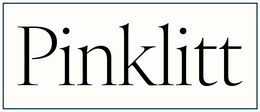The Rise of Circularity in Fashion
Circularity in the fashion industry is a hot topic these days. Fashion production alone makes up 10% of our carbon emissions, with clothing trends constantly shifting and consumerism on the rise. Behind the scenes, questions arise about what brands do with leftover materials, where waste goes, and whether workers are treated properly. As I become more aware of these impacts, I find myself leaning towards slow fashion—and maybe you should too.
The Impact of Textile Waste on the Environment
Over 80% of discarded clothes end up in landfills, contributing to climate change through excessive methane emissions. Synthetic fabrics, such as polyester and nylon, can take centuries to decompose, releasing harmful chemicals into the environment. Clothing is meant to last, not to be disposed of after a single use. Brands like Stella McCartney and Patagonia are helping shift toward a circular economy by focusing on sustainable, durable materials.
Defining Circularity in Fashion
So, what exactly is circularity, and why is it important? Circular fashion creates a closed-loop system where waste is minimized, and materials are reused or recycled. This approach contrasts sharply with fast fashion's linear "take-make-dispose" model, helping reduce the industry's environmental footprint.
Key Components of Circular Fashion
Circularity involves several key steps:
-
Designing with recyclable materials
-
Creating durable products for long-term use
-
Recycling materials to produce new items
These components form the backbone of circular fashion, ensuring resources are continuously repurposed.
Take-Back Programs: A Step Toward Sustainability
Take-back programs are a great example of reducing environmental impact. With these, consumers return used items in exchange for discounts on new ones. Brands then recycle these returned items into new designs, fostering a sustainable cycle. Next time you’re ready to part with an item, consider a brand with a take-back program.
Creative Ways to Extend Your Wardrobe's Life
From a consumer perspective, circularity also means finding creative ways to update your wardrobe without buying new. You could cut old t-shirts into a quilt, turn long pants into shorts, or personalize clothes with bleach and paint. These methods help reduce waste and add personal flair to your fashion choices.
The Role of Resale Platforms in Circular Fashion
But, if you really need to cut ties with your clothes, don’t just throw them away. Try resale stores like ThredUp and Poshmark! They have truly revolutionized the way people shop for sustainable fashion. These platforms make it easy to buy and sell second-hand clothing, reducing the environmental impact of fast fashion. ThredUp, in particular, has an impressive set-up for processing and sorting clothes, ensuring each item is given a second chance to be appreciated. Meanwhile, Poshmark provides a community-driven experience where buyers and sellers can connect and support each other.
Embrace Circularity for a Positive Impact
By embracing circularity, you contribute to reducing the waste that ends up in landfills. Circular fashion benefits the environment and empowers consumers to make a positive impact with their fashion choices. Stay informed, shop consciously, and play your part in this transformative movement!




